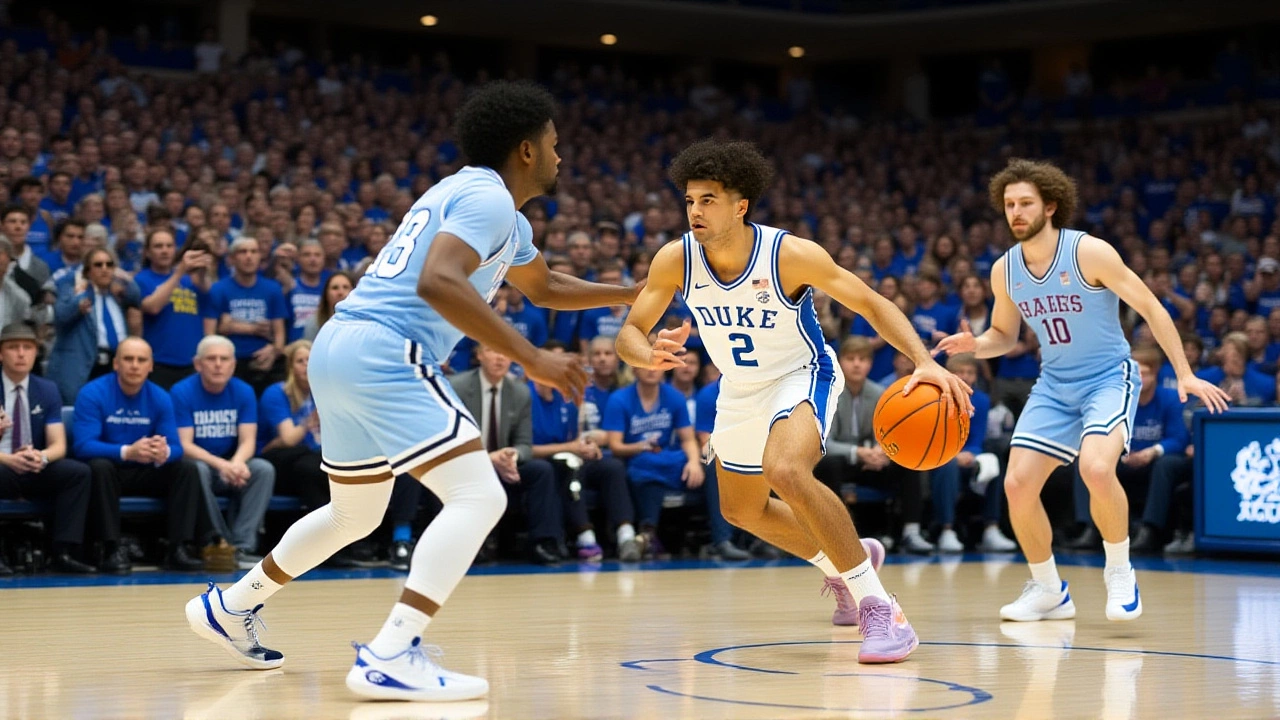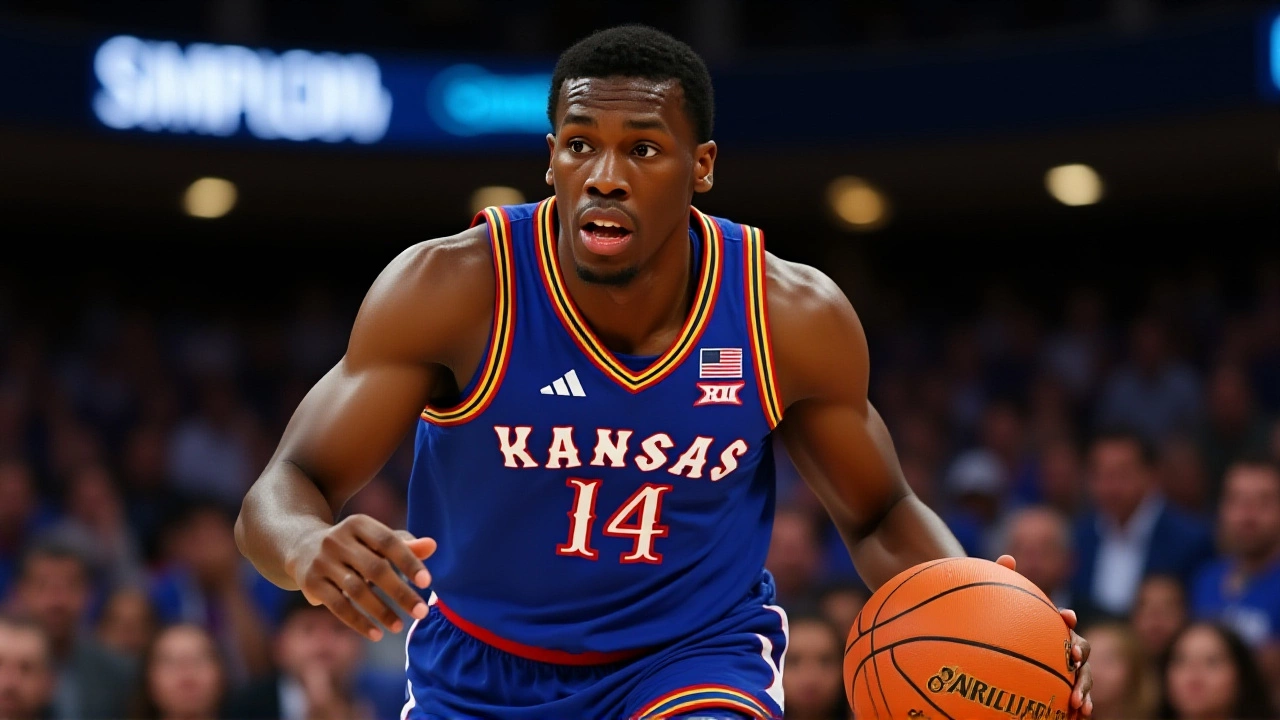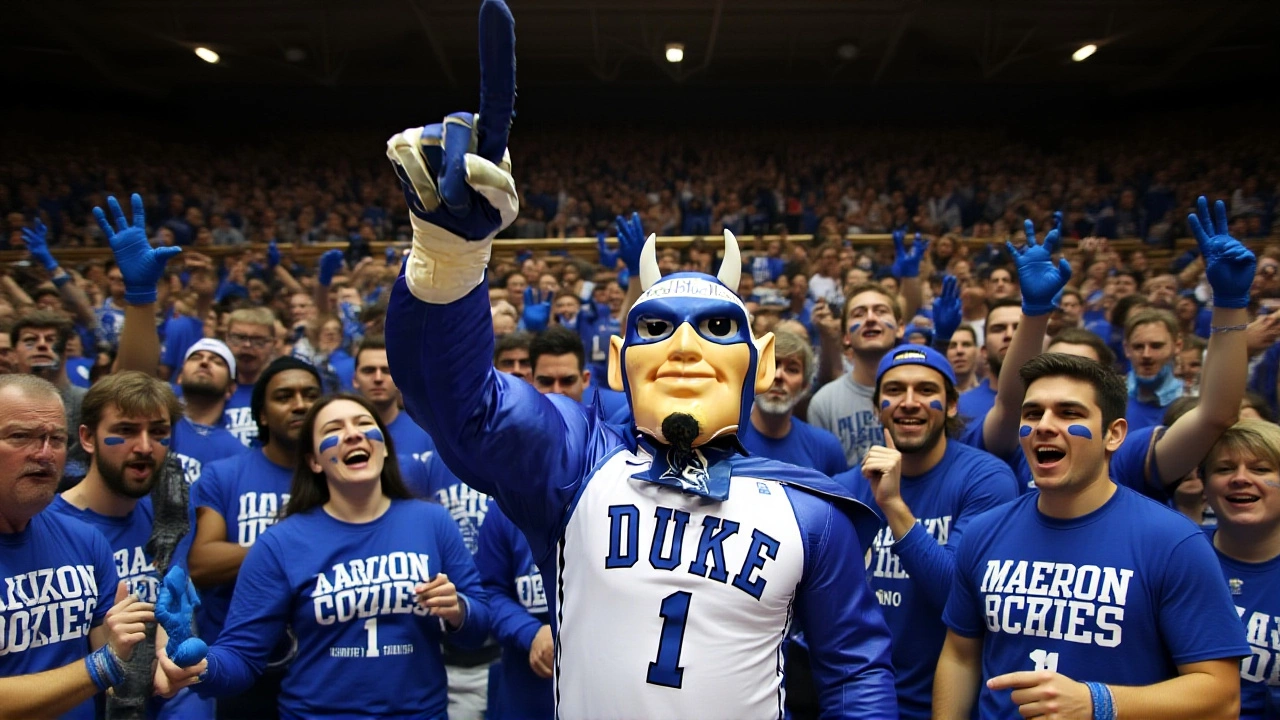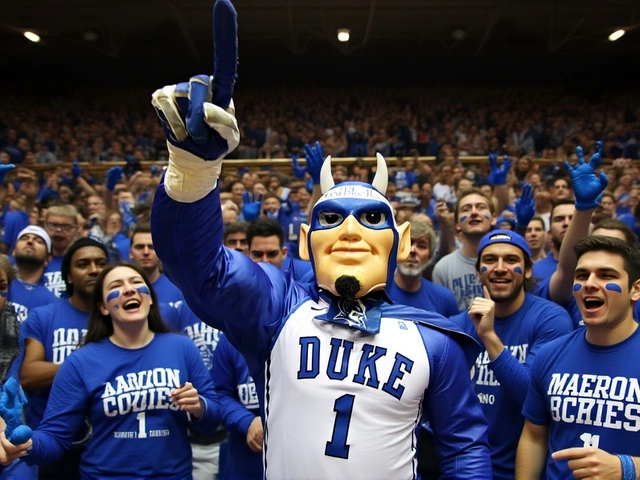When Cameron Boozer dropped in a baseline jumper with 3:12 left, the crowd at Madison Square Garden erupted—not just for the point, but for the statement. Duke wasn’t just winning. They were outlasting. The No. 5 Duke Blue Devils held off a gritty Kansas Jayhawks squad 78-66 on Monday, November 18, 2025, in the Champions Classic, extending their perfect start to 5-0 while dropping Kansas to 3-2. Boozer didn’t just score 18 points—he grabbed 10 rebounds, dished out 5 assists, and played the kind of all-around game that makes coaches whisper about NBA potential. This wasn’t a fluke. It was a statement. And it came in the most electric arena in college basketball.
Big Boy Game, Big-Time Execution
Bill Self, the longtime head coach of the Kansas Jayhawks, called it a “big boy game” before tip-off. He wasn’t wrong. The game lived up to the hype—physical, fast, and full of momentum swings. Kansas, coming off a 25-point explosion from Flory Bidunga against Princeton just two nights earlier, looked sharp early. But Duke’s depth, something Jon Scheyer, head coach of the Duke Blue Devils, had been preaching all week, became the difference. Nine players saw meaningful minutes. Nine players contributed. And when Kansas cut the lead to four with 7:30 left, Duke didn’t panic. They just kept running their sets, moving the ball, and trusting their system.“It’s what dreams are made of,” said Caleb Foster, Duke’s sophomore guard, after the game. And he wasn’t just talking about the win. He was talking about the atmosphere—the roar of the Garden, the national TV spotlight, the chance to go toe-to-toe with a blue-blood program like Kansas on a stage that doesn’t forgive mistakes.
The X Factor: Depth Over Stars
You could see it in the fourth quarter. Kansas’s starters—Jeremiah Martin, Dame Sarr, Jayden Dawson—were gassed. Duke’s bench? Fresh. Isaiah Evans hit a dagger three with two seconds on the shot clock, a moment the Duke Basketball Report called “the shot of the game.” But it wasn’t just Evans. Darren came off the pine in the second half and sparked a 9-2 run with a steal and a transition layup. Nik, the quiet transfer from a mid-major, made three clutch defensive plays in the final five minutes. Scheyer didn’t rely on two or three stars—he played nine, and they all mattered.“Our guys being fresh made a difference, particularly down the stretch in the first half,” read one forum analysis from November 19. That’s not a fluke. That’s coaching. That’s culture. Kansas, despite a 13-for-16 shooting night from Bidunga in their last game, couldn’t match that rhythm. Their rotation? Six deep, max. Duke? Nine. And it showed.

A Rivalry Rekindled
The history here matters. Kansas had won five of the last six meetings with Duke, including the last two. The Jayhawks had the psychological edge. But this time, Duke didn’t just win—they dominated the tempo. The game wasn’t decided by a single player. It was decided by discipline. Duke shot 51% from the field. Kansas? 42%. Duke had 19 assists on 29 made baskets. Kansas had 12. The Blue Devils turned 14 Kansas turnovers into 21 points. That’s not luck. That’s execution.“They’re young again,” Self said before the game. “But this early in the season, I think they may execute their stuff better than last year.” He was right. And that’s what made the loss sting. Kansas didn’t get out-talented. They got out-coached, out-prepared, and out-hustled.

What’s Next? New York, Again
Duke’s next game? Back in New York. Just seven days after beating Kansas, they’ll face another ACC opponent in a neutral-site showdown—this time, against Syracuse. The schedule doesn’t let up. Kansas? They’re heading to Indiana for a neutral-site clash with Notre Dame, then Syracuse the next day. Two games in five days. Two teams trying to prove they belong among the nation’s elite. But only one walked out of Madison Square Garden with momentum.For Duke, this win isn’t just a notch on the schedule. It’s validation. A young team, led by a 19-year-old forward who looks like he’s been here before, just beat a Kansas team that’s been to the Final Four twice in the last five years. And they did it with balance, poise, and a bench that never blinked.
Frequently Asked Questions
How did Cameron Boozer’s performance compare to past Duke stars in the Champions Classic?
Boozer’s 18-point, 10-rebound, 5-assist stat line matched the efficiency of Zion Williamson’s 2018 Champions Classic debut (21 points, 8 rebounds), but with more playmaking. Only two Duke players since 2015 have posted a triple-double in a Champions Classic game—Boozer is now the third. His ability to handle pressure in the final minutes, especially against Kansas’s physical defense, marks him as a potential All-American.
Why was Duke’s depth such a decisive factor in this game?
Kansas’s top six players averaged 32 minutes per game in their last three contests, while Duke’s ninth man, Nik, played 14 minutes and made three critical defensive stops in the final 5:30. Duke’s rotation allowed them to maintain defensive intensity late, while Kansas’s starters faded. In the final 10 minutes, Duke’s bench outscored Kansas’s bench 12-2—a stat that rarely lies in close games.
What does this win mean for Duke’s ACC title chances?
While non-conference wins don’t count toward conference standings, beating a top-25 team like Kansas on a neutral court signals Duke’s legitimacy as a national title contender. With a 5-0 start and no player averaging more than 17 PPG, they’re balanced and unselfish—traits that thrive in the ACC’s physical style. Their next three games are all against ranked ACC opponents, and this win gives them serious momentum.
How did Kansas’s loss impact their NCAA Tournament resume?
Kansas’s resume still looks strong—wins over Princeton and a top-10 North Carolina team, plus a neutral-site loss to Duke. But two losses before December is a red flag for a team that’s been a top-four seed in six of the last seven tournaments. Their upcoming back-to-back neutral-site games against Notre Dame and Syracuse are now must-wins to stay in the top-10 bubble.
What role did Madison Square Garden play in the outcome?
The Garden’s energy favored Duke. The crowd was heavily pro-Duke, with thousands of alumni and New York recruits in attendance. Kansas, despite having a loyal fanbase, was outnumbered nearly 3-to-1. The noise disrupted Kansas’s offensive sets in the second half, especially on inbounds plays. ESPN’s broadcast noted Duke’s guards communicated better under pressure—a subtle but critical edge.
Is this the start of a new Duke-Kansas rivalry era?
The Champions Classic is designed to revive historic matchups, and this game felt different. Both programs are rebuilding with elite freshmen. Duke’s youth vs. Kansas’s veteran core created a fascinating contrast. With both teams likely to be top-10 in 2026, and the next Champions Classic set for 2026 in Chicago, this isn’t just a one-off—it’s the beginning of a new chapter in one of college basketball’s most storied rivalries.

